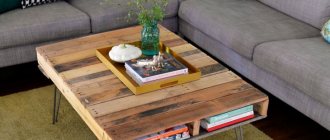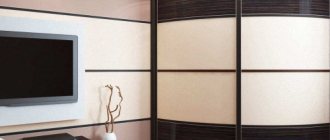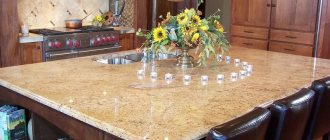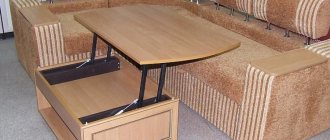When performing a wide range of repair and construction work, it is impossible to do without the use of various fasteners. The modern construction market offers a wide range of these products, which are necessary for high-quality solutions to various technical and technological problems. Their functional purpose can be completely different - from fixing a board with a simple nail, to installing an anchor that must withstand increased operating loads.
This material will discuss the main types of fasteners, various classifications, GOSTs, markings and areas of their application. They come in a wide variety of shapes, sizes and purposes - the most common today are:
- nuts;
- dowels;
- anchors;
- screws;
- self-tapping screws;
- rivets;
- hairpins;
- washers and others.
Depending on the thread pitch, fasteners are metric or non-metric (adapted).
In addition, there is another classification of fasteners - it is based on other criteria. According to it, these elements are:
- threaded, increased strength;
- fasteners for mass use;
- fasteners for shockless fixation and one-sided installation;
- elements for hermetic structures;
- fasteners necessary for fastening polymer composite materials.
This classification, although it significantly simplifies the sorting process, is conditional, since elements of one group may also belong to another. Let's take a closer look at the main ones.
Nails
Perhaps today there is no master who would not use nails in the process of his work. This is the most ancient and widespread fastening material today, which is widely used in many sectors of human economic activity. The material of their production is usually steel or steel types of wire. The nail marking consists of two numbers:
- rod diameter;
- its length (in mm).
The heads of these elements can be either smooth or corrugated, and screw and club nails can have helical, longitudinal and transverse grooves, burrs or dents on the shaft. Such products provide significant resistance to pull-out processes.
Depending on the technical characteristics of the material, the scope of use of nails also differs. For example, hardened steel products can be safely driven into brick or concrete walls. However, when working with them, you should pay attention to the high fragility of this material. In order to attach them to hard surfaces, it is necessary to use wallpaper, roofing felt and plaster types of nails. They are produced with flatter and wider caps than usual, as well as shorter stems. In aggressive environments, copper nails, which are practically not subject to corrosion processes, as well as galvanized nails or alloy steel products can be used.
As for the technological features of driving nails, they also have their own specifics. These processes require taking into account certain nuances, so we recommend using our professional advice:
- to prevent the occurrence of dents while driving nails, it is necessary to use a countersink;
- to ensure fixation strength, the fastening rod must be at least 2/3 of the length included in the lower fixed part;
- when driving small nails, it is best to use special auxiliary accessories;
- To increase the strength of joints, nails should be driven in at an angle rather than straight. The same applies if you need to hang something on it;
- if the nail went through the wall when driving, it should be carefully bent and polished using a triangular file;
- to prevent damage to surfaces when pulled out with pliers, you simply need to place a plate under them that reduces the pressure;
- if in the future you plan to dismantle the parts, then it is better not to use nails at all, giving preference to screws.
Very often, liquid nails can be used during the work process. They are made of polymer materials and rubber and are able to provide adequate fastener strength indicators no worse than traditional nails. One drop of such a substance can withstand up to 50 kg of load, but their main advantage is the complete preservation of the integrity of decorative surfaces.
The scope of use of liquid nails is very wide. They are used for fixing various panels, drywall, chipboard, fiberboard, plywood, cardboard, ceramics, stone, stucco, glass and much more. However, when choosing these fasteners, it is necessary to pay special attention to adhesion indicators, since different types of material have different degrees of adhesion. They are most appropriate to use when:
- temperature not lower than -90 С;
- high indoor humidity.
For example, some types of neutral nails are harmless because they are based on water, but they are not suitable for gluing metal. Liquid nails based on organic solvents have a high setting speed and can withstand temperatures down to -25 °C. Their only drawback is the presence of harmful volatile components that emit unpleasant odors for 5 days.
The setting of such nails occurs within 10-40 minutes, depending on the type and marking, but complete polymerization occurs only after 24 hours.
Self-tapping screws
Self-tapping screws also occupy a special niche among fasteners. There are not so many varieties of them on the modern market - a full classification is possible only according to 3 main criteria - the material into which they are screwed, size and functional purpose. According to the first criterion, the following types of self-tapping screws are distinguished:
- for metal;
- for wood.
Both products can have different lengths, widths, diameters, as well as different thread pitches. Typically, self-tapping screws for metal surfaces have a fine thread pitch, unlike “wooden” ones, which have a larger thread pitch.
Products for metal can be of several types - self-tapping and those that require preliminary drilling of the metal. The first type has a special drill at the tip, the size of which indicates the thickness of the metal into which it needs to be screwed. An example of such self-tapping screws are tex, which are used to fix gypsum plasterboard profiles. As for their second subgroup, it includes black self-tapping screws, which are necessary for attaching gypsum boards to the metal profile.
In addition, the classification of self-tapping screws can also be carried out according to their functional purpose. For example, there are self-tapping screws for roofing and general purpose. Roofing ones have a wide cap with a press washer, which is necessary to seal the hole to prevent water leakage.
Anchors: types and features of application
An anchor is a fastening element that is designed to fix various structures and materials. In addition, this name characterizes parts partially concreted into any concrete product. Depending on the design, shape and purpose, the following types of anchors are distinguished:
- ceiling;
- driving;
- wedge;
- frame;
- anchors with half rings and rings;
- anchors with nuts.
They are united by a common function - fastening. For example, drive-in anchors with internal threads and a cone-shaped wedge are necessary to fix various products and materials to a brick or concrete base. It is installed quite simply: it is fixed into a pre-made hole. Its radius and depth are selected depending on the size of the anchors themselves.
Wedge-shaped products are used for quick fastening of planks, profiles, and suspended ceilings in concrete. These types of anchors are very often used to secure heavy equipment to a solid base. For high-quality installation of wedge anchors, a hole is drilled in the concrete base, into which the product is hammered using a hammer, which is subsequently tightened with nuts. As for ceiling anchors, they can be made of galvanized steel, and are necessary for fixing metal profiles, facades, railings, gratings and other products on a concrete or stone base without cracks. Frame anchors are necessary for attaching frames and wooden door frames to concrete walls.
A lot of users try to use this type of fastener for other purposes. For example, they are attached to brick walls, as a result of which the fastening element and nerves deteriorate. But the main thing is the very large holes that remain in the brick after the anchor is removed. They are used, as a rule, in concrete materials, while in soft materials such bolts tend to simply turn. Classification of anchors is also a very difficult task, since products can belong to different groups at the same time, but usually there are three types:
- fastening;
- hook-shaped;
- loopback
The first type is universal, the second is designed for hanging objects, and the third is for catching something. In addition, these fasteners can be divided into the following main groups - with a wedge at the end and with a wedge in the form of a nut. Anchors are manufactured in fixed sizes - the smallest have a length of 50 mm and a diameter of 6-8 mm, the largest - up to 500 mm and a diameter of up to 22 mm.
Tip: the question of how to install an anchor can be solved very simply. To do this, you simply need to select the correct diameter of the hole - you need to drill with a drill of exactly the same size as the anchor itself - you can’t expect that a 12 mm bolt will hold in a 15 mm hole. It is also not advisable to wrap anything around the anchor, it does not make any sense - just insert it into the hole and tighten it with a screwdriver.
Additional advice from experts on installing cabinet fasteners
Adviсe:
- Vibrations of the drill at the beginning of drilling can be eliminated by first punching a small hole with a punch.
- To prevent the wall from crumbling, reduce the diameter of the drill.
- The depth of the hole is controlled using a mark on the drill.
- Before drilling, determine the location of the electrical wiring.
Having chosen the fastening option, taking into account the strength and material of the walls in the room, having prepared the place and tools, you can safely get to work.
Did you manage to solve your problem using the recommendations from the article?
Yes!
51.52%
No. More answers required. I'll ask in the comments now.
27.27%
Partially. There are still questions. I'll write in the comments now.
21.21%
Voted: 33
Dowels
These fasteners are also extremely popular in the modern construction market. They are necessary for high-quality fastening of various objects and materials to solid structures. There are three types of dowels:
- metal ones are the most ancient. They can be used on almost all surfaces, however, using a simple hammer it is problematic to hammer them, especially into hard materials - therefore, pneumatic, electric or cartridge guns are more often used. Such dowels differ from each other only in diameter and length;
- installation ones are the most common today. They can be manufactured in two variations, which differ from each other in the shape of the plastic tip. In some cases they are mounted in a specially prepared chamber, but in others they are not (the plug has a mushroom-shaped shape). Such dowels are installed using a hammer drill - a hole is made, and then a plastic plug is inserted into it, into which a steel nail is driven or screwed. If necessary, you can then very easily unscrew it thanks to the special thread. Depending on the diameter, dowels are 6.8 - 14 mm, and lengths - 30-300 mm;
- spacer (Bierbach dowel) - made of steel and demonstrate high performance characteristics for use in concrete foundations. They consist of two wedges that are connected to each other in a movable way using a washer. They are mounted in pre-drilled holes, in which they are then wedged with one impact force of a hammer.
They are usually used for fastening in solid wall structures. The fixation of the dowel is based on the frictional force that occurs due to the spacer of the fastener during installation with the appearance of a holding force. The dowel can withstand increased static loads - when installed, the fasteners are destroyed during the pulling process.
The product itself is made of polymer materials. Their physical and mechanical characteristics can be greatly transformed, depending on various influences and conditions. These include, first of all, the parameters of the filler, the ratio of the components of the polymer material, and the properties of the binder. The disadvantages of polymer dowels include low heat resistance, a tendency to deform under load, and increased aging. Only screws can withstand maximum loads if they are correctly selected for the dowel. They must have all parameters (length and diameter) that fully correspond to the parameters of the dowels. The use of other fasteners places increased demands on the thread profile, since they determine the spacer effect. It is undesirable to use self-tapping screws and self-tapping screws to secure drywall.
Drywall fastening: molly
For high-quality fixation of gypsum board sheets, there is only one group of fasteners, which is called “molly”, received from the company that developed this fastener. It consists of two parts - an empty folding tube with special slots, a nut and a screw. As the screw is tightened, the tube is assembled and crimped on both sides of the gypsum board. There are two types of molly:
- metal;
- plastic.
The first type is the most reliable - it is installed using special pliers, and to install plastic ones, you need to pre-drill holes with a diameter of 8 mm, insert fasteners into them, and then tighten the screws. Using such elements, only light objects can be hung on drywall - if it is necessary to fix heavy ones, then embedded profiles should be provided.
Conclusions on the topic
Thus, we considered the topic of choosing the most reliable fastening for the wall, namely the choice of a self-tapping screw (hardware) and a dowel for it. If for any reason you doubt the reliability of the fastenings that we talked about, you can consult the salesperson in the store, explaining to him what exactly you are going to hang. For some products, there may be special fasteners, but we have considered universal ones.
If you have any questions, we are waiting for you in the comments. Our authors and readers are happy to share their thoughts on the topic.
Happy renovation!
Bolts
Bolts are cylindrical fasteners that have a metric cylindrical external thread and a head that is designed to fit a nut. They make it possible to create connections using nuts or pre-made threaded holes in fixed parts. They are in form:
- stepped, in which the thread diameter is smaller than the diameter of the smooth part;
- foundation ones, which have a specially shaped head that helps secure equipment and units to the base;
- with a hexagon-shaped head for a wrench - this is the most common design option.
A bolt is inserted into a pre-prepared hole in the parts that need to be fastened, after which a nut is screwed onto the thread and the elements are tightened using a wrench. The connection is fixed due to friction - but in order to transfer part of the loads to the bolt, it is necessary to ensure maximum precision in the production of the rod and the holes for it. To prevent deformation of parts, washers are installed under the bolt head and nuts. Bolts are always used in combination with nuts.
What is a mechanical anchor?
Such fastening fittings are used everywhere and for various surfaces. A mechanical anchor is a sleeve sawn halfway along, on one side of which a bolt is inserted, and on the other side a nut is screwed onto the thread. After the sleeve is inserted into the drilled hole, the bolt begins to be turned using a wrench. The cone on the reverse side begins to move along the thread and pushes the sleeve petals apart, which stand against the walls of the hole. This ensures reliable fixation of any structure on the wall.
The bolt can be a regular straight pin with a hook or a ring - the choice here will depend on the needs of the home craftsman.
Lifts in car repair shops are also fixed with similar fasteners.
Nuts: types and principle of operation
Nuts are also a very popular type of fastener, which is distinguished by a specially cut threaded connection inside the hole. Galvanized products are the most widely used, and their shape can be completely different - hexagonal, round with notches, square, with protrusions for gripping with fingers. The main functional purpose of a nut is to connect parts using bolts. They are:
- hexagonal;
- square;
- in the shape of a “lamb”;
- flanged with grooves for a cotter pin in the form of a cap;
- T-shaped, with special plastic inserts.
In addition, nuts are also divided into strength categories according to the types of bolts with which they are used.
Rivets
Combination type blind rivets consist of an aluminum body and a rod, which is made of galvanized steel. This design feature is one of the most common and in demand today. Rivets are used to connect two or more surfaces of thin sheets - with their help, a permanent connection is created. Also on the modern market there are rivet nuts. These are fasteners widely used in electronics and mechanical engineering. They are needed to create threaded connections in metal materials or other thin surfaces that have high strength.
Among the large selection of these fastening products, one of the most durable are threaded steel rivets. They are protected from corrosion by galvanizing. In design, such products differ from simple exhaust systems in that they can not only connect sheets of materials to each other, but also have an internal screw thread. They are mounted in hard-to-reach places where it is impossible to reach with a riveter. There is a wide selection of standard sizes on the modern market, so choosing them to solve the required technical problem is not difficult.
What are the best types of fasteners?
Below are the five most popular types of fastener coatings:
- White zinc is one of the most popular fastener coatings available on the market. Cheapness is one of the main reasons for its enormous popularity. White zinc fasteners are highly resistant to oxidation. This coating is recommended for environments where parts are exposed to high humidity and risk of rust.
- Yellow zinc is electrically applied to fasteners. This coating is ideal for applications where fasteners may come into contact with water or other liquids. In rooms with high humidity, it is also recommended to use parts coated with yellow zinc. First of all, fasteners are coated with this material to inhibit corrosion.
- Gray phosphate is another important fastener coating that is designed to increase service life. However, this type of coating is not recommended for use in environments where there is a high risk of corrosion. For example, gray phosphate coated fasteners are not suitable for marine or freshwater applications. This means that they should only be used in dry conditions. They can be used to fasten various parts in vehicles or interior parts of buildings, etc.
- Hot dip galvanizing is a coating that is applied to steel to protect it from corrosion. Fasteners are coated with galvanized zinc. They are usually considered for outdoor applications where there is constant exposure to extreme weather events (snow, heat and rain).
- Galvanizing involves the presence of a thin layer of zinc on parts, which provides economical protection against corrosion. These fasteners are used in areas where less corrosion protection is required, such as the kitchen, bathroom, etc. Most fasteners used in roofing are electro-galvanized. They must be replaced before the fastener begins to wear.
- Dacromet is a new anti-corrosion coating with zinc and aluminum powder, chromic acid and deionized water as the main components. It is free from hydrogen embrittlement and has excellent torque and preload properties. If hexavalent chromium contamination is not taken into account, then it is actually most suitable for high strength fasteners with good anti-corrosion requirements.
In addition, there are surface finishing methods such as cadmium plating, chrome plating, silver plating, nickel plating, zinc plating, etc. While all of the above coatings are designed to protect fasteners, they are not all created equal. Coatings have varied properties and are not suitable for all conditions. Thus, you need to be extra careful when choosing the right type. Incorrect selection may affect the effectiveness of the fasteners.
Use of screws, screws and other fasteners
In order for the screws to correctly perform the functions assigned to them, their sizes should be selected correctly. Screws are fasteners that are necessary for wood structures - their shaft tapers towards the end and acts as a drill. This type of fastener cannot be used as nails, driven into the surface - they must be completely twisted from start to finish. Before using small screws, you should make a preliminary puncture, and large ones, a hole of a smaller diameter.
Screws are used to secure metal structures. Their heads allow high-quality pressing of the part to be joined, and the shape is selected in such a way as to make the process as easy as possible using a wrench or screwdriver. Depending on this, the screw heads can have different shapes:
- hexagonal;
- semicircular;
- secret.
They are always screwed into threaded holes, and in some cases they may have a design in which a hole is drilled at the end of the screw for cotter pins - wire rods with a semicircular cross-section. It is necessary in order to prevent spontaneous unscrewing of the fastening element.
If the screw is rusty, a hammer or special crimps can be used to remove it. Heating the nut using a gas torch or blowtorch can often help in this process. If the use of open fire is prohibited for some reason, then a red-hot iron rod or soldering iron can be used.
Other products are also used for high-quality fasteners:
- washers are round plates made from cold rolled strip. They are used to increase the strength of bolted joints by placing them under the bolt head or under the nut;
- studs are cylindrical rods with external threads cut along the entire length or at the ends. Used in cases where more than one material in the connection does not have a thread;
- screws are rod fasteners with a conical point that have the property of creating new threads in plastic or wooden products.
There is a very large selection of fasteners on the building materials market. They must be selected in full accordance with the technological features of the application and technical goals, as well as operating conditions.
Which screws to choose for a certain load
In order to choose the right hardware depending on the load, you can contact your sales consultant and ask him to help you. Or, you can look at our table and decide on your choice before going to the store.
Different screws depending on the load are presented in the table below.
| Load, kg | Standard size of the self-tapping screw depending on the wall material, excluding the thickness of the product being fixed | |||||
| Regular brick | Concrete | Tile | Porous concrete | Tree | Drywall | |
| less than 1.0 | 3×25 | 3×16 | 3×16 | 3×16 | 3×25 | 3×16 |
| up to 5.0 | 3×25 | 3×20 | 3×25 | 3×25 | 3×30 | 3×16* |
| up to 10.0 | 4×25 | 4×20 | 4×25 | 4×30 | 3×25 | 3×16* |
| up to 20.0 | 4×50 | 4×40 | 4×50 | 4×70 | 4×50 | 4×16* |
| up to 30.0 | 5×70 | 5×50 | 5×70 | 5×70 | 5×50 | 4×16* |
| up to 50.0 | 6×80 | 6×60 | 6×80 | 6×90 | 6×60 | – |
| up to 75.0 | 8×100 | 8×80 | 8×100 | 8×140 | 8×100 | – |
| up to 100.0 | 10×140 | 10×100 | 10×160 | 10×160 | 10×120 | – |











